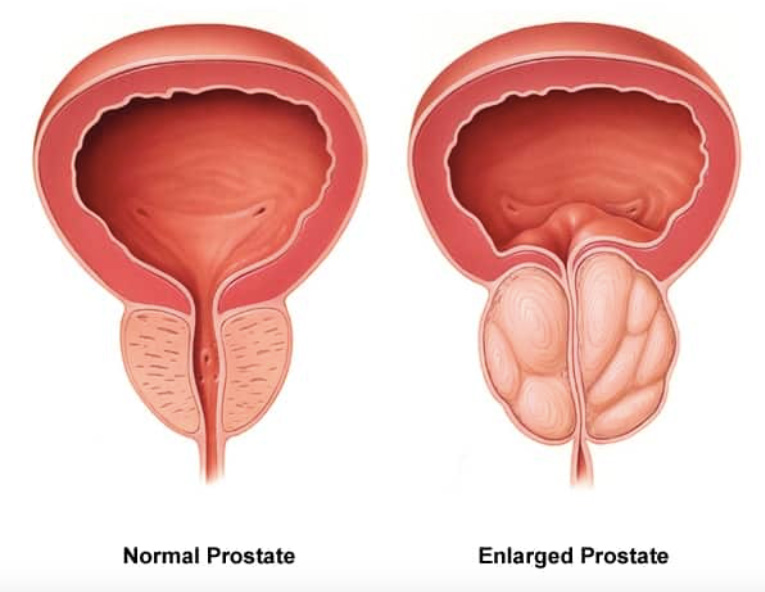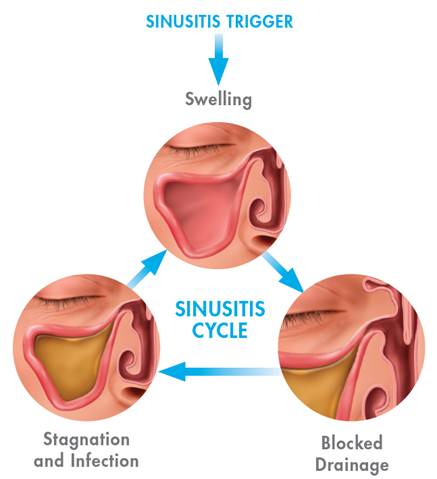Atopic Asthma
An individual with atopic asthma will have mast cell-bound IgE molecules residing in their airway. Inhalation of the offending allergen can lead to cross-linking of the adjacent IgE, causing mast cell activation and the release of mediators. In the lungs, high levels of mediators including histamine and other pro-inflammatory mediators caused by an allergic reaction create chronic inflammation and narrowing of the airway which is the pathological event underlying most asthma cases. Symptoms can include, wheezing, coughing, and chest tightness as the airways become restricted and inflamed. The symptoms may flare-up with difficulty breathing during an asthma attack when the smooth muscles of the airways become restricted.
Early Phase Response: Asthma symptoms can occur immediately (early-phase response) or some hours after allergen exposure (late-phase response). Many immune cells and mediators are involved in the asthmatic response and all play a role in the evolution of both the early and late responses. In the early asthmatic response after allergen exposure, inflammatory mediators, including large quantities of histamine, are released from mast cells on the mucosal surfaces. Histamine causes immediate bronchoconstriction and bronchospasm, resulting in narrowing of the bronchioles. Leukotrienes, also released from mast cells, are also potent bronchoconstrictors of airway smooth muscle, amplifying the action of histamine. Leukotrienes also increase microvascular permeability, resulting in edema and narrowing of the airways and stimulation of the secretion of mucus in the lower respiratory tract. Prostaglandins, released by mast cells, are also involved in the early-phase response.
Late Phase Response: About 60% of patients will experience late-phase response. The late asthmatic response involves the infiltration of the airways with inflammatory cells and mediators, in particular eosinophils, which results in airway narrowing and associated bronchial hyperresponsiveness with bronchial smooth muscle over contraction. Atopic individuals who have the genetic tendency to develop allergic diseases have increased levels of the cytokine inflammatory mediator IL-5 produced by their immune cells such as mast cells and T-lymphocytes. This IL-5 mediator stimulates the production of eosinophils and also attracts them to the site of inflammation. Eosinophils play an important role in the pathophysiology of late response asthma and the associated inflammation and bronchoconstriction. They produce a host of enzymes, proteins, and mediators causing epithelial tissue damage. This damage contributes to chronic changes such as airway remodeling and airway hyper-responsiveness. Symptoms can include shortness of breath as well as an increased chance of lung infections as the lining of the airways can become damaged, making it easier to allow bacteria to harbor. In severe cases, the asthmatic airway can lead to the development of COPD.
In chronic allergic asthma cases, the individual’s bronchial epithelium is not fully matured and inflammatory cells and eosinophils are accumulated in the bronchial mucosa. This allows allergens to easily trigger allergic reactions with airway inflammation and smooth muscle constriction continuously. The lack of tissue maturation also increases the susceptibility of the bronchial epithelium to allergen-induced injury with an ineffective repair mechanism during chronic allergen exposure.1 It is similar to that observed in chronic wounds and pathological scaring which involves massive apoptosis of inflammatory cells and accumulation of myofibroblasts. The epithelialization remains incomplete and epithelial integrity can’t be restored and the inflammation can’t be resolved.1 This leads to tissue remolding with the extracellular matrix deposition and deformation of the normal tissue causing irreversible airflow obstruction and impaired pulmonary function.
Non-Atopic Asthma
Asthma is usually diagnosed in childhood. In many patients the symptoms will disappear or are significantly reduced after puberty. After age 20, symptoms may begin to reappear. In some cases, asthma will be first diagnosed over the age of 20 years old, e.g. at the age of 50, 60, or even later. This type of asthma is called adult-onset asthma. Unlike children who often experience intermittent asthma symptoms in response to allergy triggers or respiratory infections, adults with newly diagnosed asthma generally have persistent symptoms including wheezing, dry cough, shortness of breath after exertion, and chest tightness. Childhood onset asthma is usually atopic asthma which is caused by an allergy. Although ~30% of adult asthma cases are triggered by exposure to irritants such as cigarette smoke, chemicals, mold, dust, or other substances commonly found in the person’s environment, many adult-onset asthma cases are non-atopic and do not get triggered by an allergy.
The bronchi inflammation and bronchi smooth muscle constriction in these asthma cases are induced by internal toxins. The toxins may come from infections from viruses, mycobacteria, other infectious agents, or hormonal fluctuations caused by conditions such as menopause. The smooth muscle of the blood vessel that supply blood to the bronchi can also become restricted in non-atopic asthma patients and it can cause reduced blood flow to the bronchi. Low oxygen supply causes an increased level of free radicals which further irritate the bronchi and cause bronchi inflammation.







